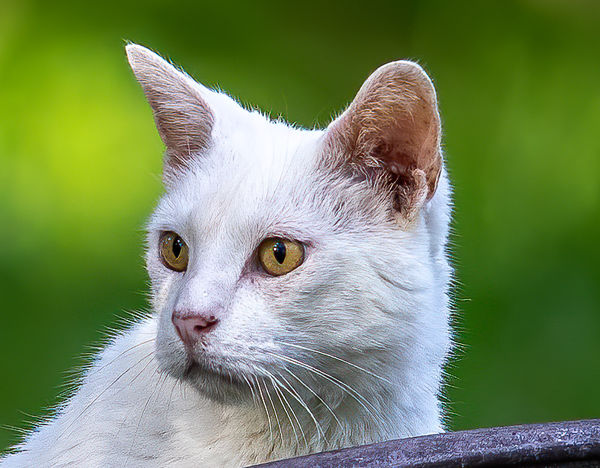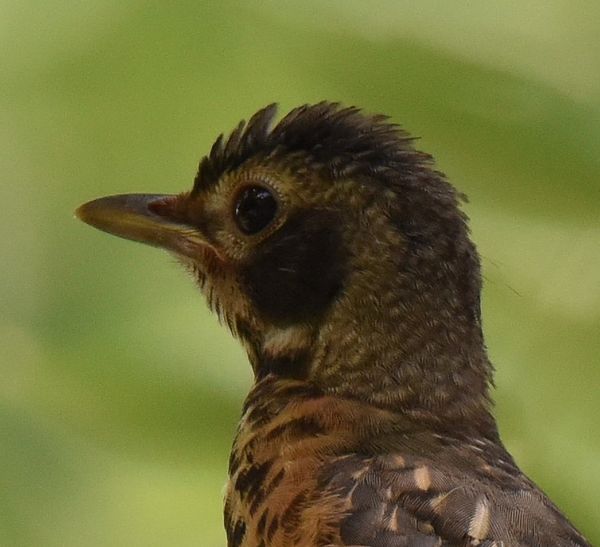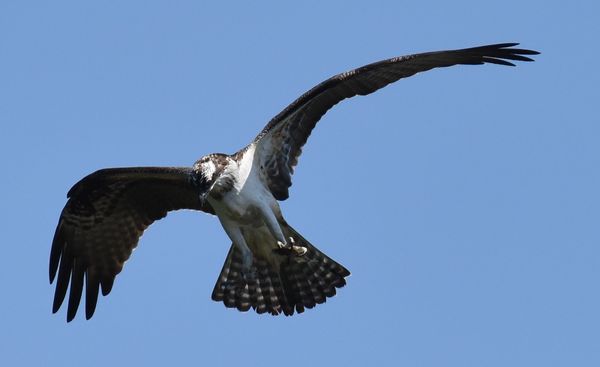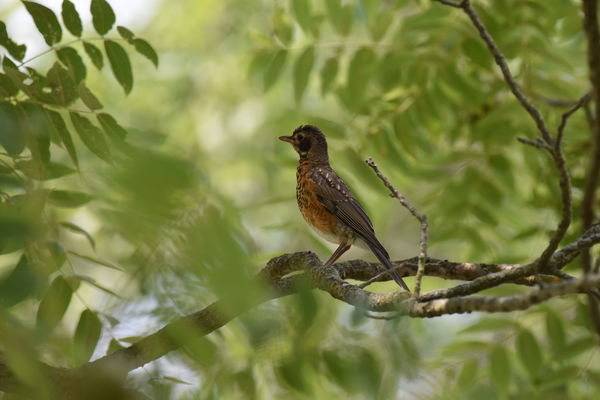How many megapixels
Aug 28, 2020 10:21:13 #
I am primarily a wildlife photographer, bird, bugs,flowers. The birds will not let you get close enough even with my 200-500 mm lens. I, of course resort to cropping to get the good part of the capture. When I used my 21 megapixel sensor I was more limited than I am now with my 36 megapixel sensor. My question is, how many megapixels are necessary to get an aesthetically pleasing print in say an 8x10 or 11x14. I am attaching 2 photos that show how much I actually crop. 8122 347kb from 20763 kb 7382 182 kb from 24432, and of course the other age old question would I get better quality if I shot raw rather than jpeg which would roughly double the size of the captured photo. Thanks for your input
Aug 28, 2020 10:33:46 #
20 MPs should be enough if you don't crop in excessively like you did on the birds head regardless of the number of MPs you have. The BIF shot seems like a more reasonable crop for 21 MPs and would yield good results in the sizes you mention. The main thing remains, using more mag in your optics will always give you better results than extreme cropping.
Aug 28, 2020 10:43:54 #
Over the last 6-7 months I've been using a 16MP sensor. I find it quite adequate. I also love the 16bit image format.
--Bob
--Bob
oakvillebob wrote:
I am primarily a wildlife photographer, bird, bugs... (show quote)
Aug 28, 2020 11:04:40 #
Regarding online display, try to retain 2048-pixels on the long-side of the image to "fill" most any target high-def screen sizes.
For printing, try to retain 300 pixel per inch on the long side of the intended print size, as in "300 pixels per inch" or 300ppi. So, for your 8x10 print, you want a file that is 3000 pixels on the long side, just a bit more than the 2048px for online display.
Canon had a white paper last year saying professional cameras in the 20ish MP range have the pixel resolution for 2-page magazine spreads. I just measured the first magazine I could find around the house, it was 17x11 inches opened to 2-pages. So at 300ppi, that would be 5100px on the long side, slightly smaller than the 5568×3712 (20.9MP) sensor of the D500, leaving a small amount of pixels for cropping, but assuming you filled the frame with the subject.
And of course, 300ppi is the 'gold standard'. Less pixels per inch are still excellent prints, particularly when you get to larger sizes than this 17x11 two-page magazine size.
As a reminder, the pixel resolution of the image is the same for large RAW and the large / fine JPEG size from the same camera. The file size is not an indication of the pixel resolution of the image.
For printing, try to retain 300 pixel per inch on the long side of the intended print size, as in "300 pixels per inch" or 300ppi. So, for your 8x10 print, you want a file that is 3000 pixels on the long side, just a bit more than the 2048px for online display.
Canon had a white paper last year saying professional cameras in the 20ish MP range have the pixel resolution for 2-page magazine spreads. I just measured the first magazine I could find around the house, it was 17x11 inches opened to 2-pages. So at 300ppi, that would be 5100px on the long side, slightly smaller than the 5568×3712 (20.9MP) sensor of the D500, leaving a small amount of pixels for cropping, but assuming you filled the frame with the subject.
And of course, 300ppi is the 'gold standard'. Less pixels per inch are still excellent prints, particularly when you get to larger sizes than this 17x11 two-page magazine size.
As a reminder, the pixel resolution of the image is the same for large RAW and the large / fine JPEG size from the same camera. The file size is not an indication of the pixel resolution of the image.
Aug 28, 2020 11:25:25 #
Strodav
Loc: Houston, Tx
For a high quality print you want 300 or more pixels per inch (ppi). Many will say 600 ppi. If you have 36mp sensor (7360 x 4912 for my Nikon D800) and you have filled the frame then a 7360 / 300 x 4912 / 300 = 24 1/2" x 16 1/3" should be a very nice looking print. For an 8 x 10 you want 8x300 x 10x300 = 2400 x 3000 pixels. This all depends on how much detail is in the original image, your viewing distance, lighting and your personal perception of what is a sharp print. A normal viewing distance is around 1.5x or 2x the diagonal length of the print. Many will say all you need is about 120ppi for a good looking print. Some will even proclaim their print is beautiful at 60ppi. It is very subjective.
Birding is my passion and it seems the best shots are always further away so require a lot of cropping, which is generally fine for posting on social media where all you need is about 1200 pixels on the long side, but can be problematic for high quality large prints as 1200 / 300 = 4" for the long side, but if you accept 120ppi, then you can get 1200 / 120 = 10". So, sorry because the only good answer is it depends, but experienced birders will tell you that you can never have enough reach or enough pixels for birding.
Birding is my passion and it seems the best shots are always further away so require a lot of cropping, which is generally fine for posting on social media where all you need is about 1200 pixels on the long side, but can be problematic for high quality large prints as 1200 / 300 = 4" for the long side, but if you accept 120ppi, then you can get 1200 / 120 = 10". So, sorry because the only good answer is it depends, but experienced birders will tell you that you can never have enough reach or enough pixels for birding.
Aug 28, 2020 11:37:45 #
Fotoartist wrote:
20 MPs should be enough if you don't crop in excessively like you did on the birds head regardless of the number of MPs you have. The BIF shot seems like a more reasonable crop for 21 MPs and would yield good results in the sizes you mention. The main thing remains, using more mag in your optics will always give you better results than extreme cropping.
When printing a cropped photo, the state of the art in interpolating up of images is remarkable. I do it all the time up to about 150% max. over original file size. The proof is in the print quality. If you see outstanding results you probably wouldn't get any better regardless. 300 dpi for prints is a good rule of thumb but 240 dpi is also excellent and some would say that more than that is overkill.
Aug 28, 2020 12:09:48 #
Thanks for your answers I see I'll stick to digital display, or I have to get a 2000mm lens or the invisibility cloak Bilbo Baggins used in the Hobbit
Aug 28, 2020 16:12:43 #
Strodav wrote:
For a high quality print you want 300 or more pixe... (show quote)
The reason not to go beyond 300PPI because I don't know of a printer that can do that. Printer may have as high as 4800 or 9600 DPI but they use a group of dots to create a pixel so their PPI isn't more than 300 in most case. Some can do 400PPI but I don't know of any that can do 600PPI.
Aug 28, 2020 16:55:20 #
Strodav
Loc: Houston, Tx
BebuLamar wrote:
The reason not to go beyond 300PPI because I don't know of a printer that can do that. Printer may have as high as 4800 or 9600 DPI but they use a group of dots to create a pixel so their PPI isn't more than 300 in most case. Some can do 400PPI but I don't know of any that can do 600PPI.
I have a commercial printing background and some higher quality work benefits from higher resolutions.
Aug 28, 2020 17:18:52 #
oakvillebob wrote:
I am primarily a wildlife photographer, bird, bugs... (show quote)
Photographers who look at their large prints (24x36 and bigger) at a distance of 24" believe it is essential to have 300 ppi or more. A 24x36 print is typically viewed when it is on a wall, and not from a distance of 24" - more like 4-5 ft. At 4-5 ft, no one can tell the difference between 200 ppi and 300 ppi, any more than they can read th e NY Times body text (8.7 pt Imperial) at the same distance. And the fine detail of a 300 ppi print is actually smaller than the typeface and point sized used in the newspaper. So, that is what I call a zombie myth - one that won't die, even in the face of evidence to the contrary.
Anyway, here is a site that will inform your choices for cropping, print size and ppi. It has a few charts with sample print sizes and ppi required for perception of sharpness, plus it has a couple of calculators and the actual physiological basis for the calculations. In short, while you can print 600 ppi - as the print size increases your ability to see that level of detail diminishes.
http://www.photokaboom.com/photography/learn/printing/resolution/1_which_resolution_print_size_viewing_distance.htm
Aug 29, 2020 08:12:32 #
Also don't overlook the benefit of software interpolation when making large prints. Years ago I was able to make beautiful 20x30 prints with a 6MP Nikon D70 using Genuine Fractals (now On1 Resize). The software has improved tremendously since then, and Topaz Gigapixel AI is nothing short of amazing. Download a free trial copy and see for yourself.
Aug 29, 2020 09:06:34 #
cactuspic
Loc: Dallas, TX
There are three ways to get more pixels on bird and avoid the shots where there is not enough detail captured. Sometimes, an improvement in your tracking and hiding technique can get you closer. If your back and bank account are strong, a longer lens may work. Increasing the megapixel count within the same size sensor will increase your resolution and the ability to crop. It will also extend the range of photos that can be up rezzesd successfully.
There are a number of features I consider In addition when I chose a body for birding, such as frame rate, low light noise, focusing system, buffer etc. resolution is just one factor. That said, if everything else is equal, greater megapixel counts will allow for more usable images
There are a number of features I consider In addition when I chose a body for birding, such as frame rate, low light noise, focusing system, buffer etc. resolution is just one factor. That said, if everything else is equal, greater megapixel counts will allow for more usable images
Aug 29, 2020 09:38:35 #
oakvillebob wrote:
I am primarily a wildlife photographer, bird, bugs... (show quote)
Well, here is what 61MP can do...just a shot of my cat. Nothing special.


Aug 29, 2020 10:34:36 #
oakvillebob wrote:
I am primarily a wildlife photographer, bird, bugs... (show quote)
Shoot raw and then you will answer your own question. 8 bits vs 14 - I leave it you to calculate how many more pixels you get in a photo and thus the quality.
Aug 29, 2020 10:59:59 #
DanCSF
Loc: SA Bay Area CA
Morning All,
Long time lurker and now finally a responder, from the SF Bay Area:
The resolution/pixel question...so here's a new view of it..look up Anthony Morganti and his recent video
https://www.youtube.com/watch?v=bSx1PlrUhr4
How much cropping do you really need to get a decent image and for what purpose? For some it depends on the output; hard copy, FB, FlickR...etc...I've come to the point where if I have to do an extreme crop then it's not worth keeping unless it's just a memory thing and I'm not going to show it.
Just my humble 2 cents from the SF Bay Area....
Long time lurker and now finally a responder, from the SF Bay Area:
The resolution/pixel question...so here's a new view of it..look up Anthony Morganti and his recent video
https://www.youtube.com/watch?v=bSx1PlrUhr4
How much cropping do you really need to get a decent image and for what purpose? For some it depends on the output; hard copy, FB, FlickR...etc...I've come to the point where if I have to do an extreme crop then it's not worth keeping unless it's just a memory thing and I'm not going to show it.
Just my humble 2 cents from the SF Bay Area....

If you want to reply, then register here. Registration is free and your account is created instantly, so you can post right away.











